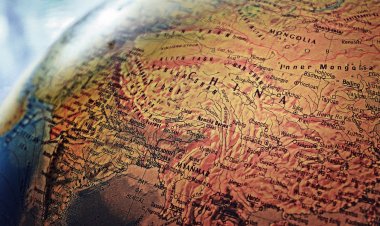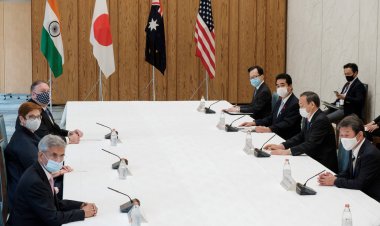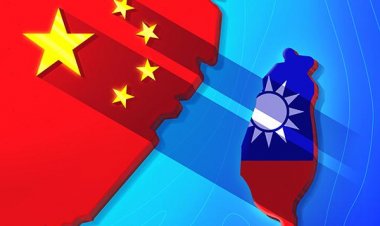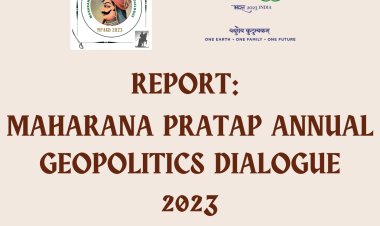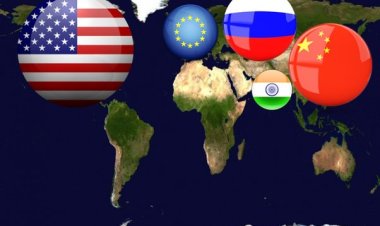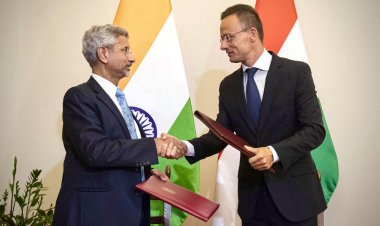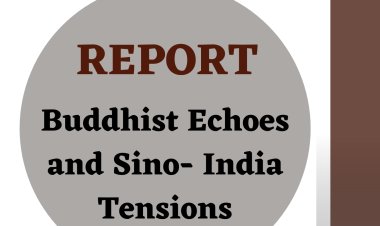Island Allies: India’s Strategic Move into the Pacific
This article dives into the key drivers behind India's outreach to Pacific nations and explores the implications of this evolving relationship in the larger context of international relations.
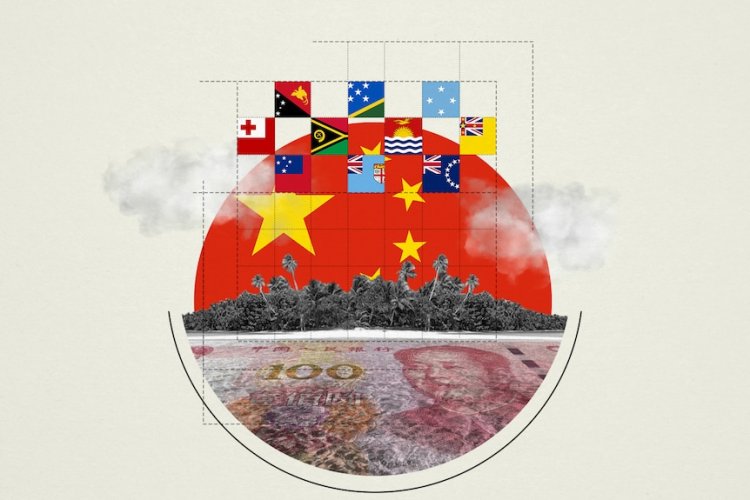
Analysis
By Arundhati Singh Tiwari
In recent years, the Pacific Island countries have received significant attention as India's foreign policy has witnessed a strategic pivot towards a region that traditionally remained on the periphery of New Delhi's diplomatic radar. The aspirations of India to position itself as a major player on the international stage are reflected in this engagement, which is a mix of geopolitical, economic, and cultural imperatives. This article dives into the key drivers behind India's outreach to Pacific nations and explores the implications of this evolving relationship in the larger context of international relations.
IMPORTANCE OF THE PACIFIC ISLAND COUNTRIES
The Pacific Island Countries (PICs) are situated at the intersection of the Indian and Pacific Oceans and include the Cook Islands, Fiji, Kiribati, Marshall Islands, Micronesia, Nauru, Samoa, Solomon Islands, Palau, Papua New Guinea, Tonga, Tuvalu, and Vanuatu. While the region possesses natural beauty that is attractive for tourism, its significance extends beyond this, playing a vital role in global economic and strategic matters. Primarily reliant on maritime trade and shipping for economic stability, the PICs also serve as key players in trade routes and contribute to global economic equilibrium.
KEY DRIVERS OF INDIA’S ENGAGEMENT
India's strategic shift towards the South Pacific is driven by its aspiration to emerge as a major global power. With the goal of bolstering its geopolitical standing and expanding its influence in international relations, India has been extending its presence across the Indo-Pacific region, particularly in the South Pacific Islands. India seeks to elevate its diplomatic prominence and position itself as a key security provider in the region through active engagement with these strategically positioned smaller nations.
It is also the increasing presence of China in the South Pacific that has provided the impetus behind India’s move towards the region. The flagship Belt and Road Initiative of Beijing has been instrumental in making inroads in the South Pacific, supported by other aid and investment programs. The view in India is that China’s growing influence in its maritime backyard is a potential threat to its security interests, and one way of countering this is to form strategic relations with the small island nations to maintain balance.
The South Pacific is a region abundant with fisheries and other maritime resources that are economically important to India. Therefore, another factor driving India’s engagement with the region is access to its marine resources. India aims to secure preferential access to their exclusive economic zones (EEZs) and marine resources by establishing ties with these island nations, thereby supporting its domestic fishing industry and food security.
Throughout history, India's engagement with the South Pacific has been limited primarily due to geographical distance and India's focus on immediate neighbors and other significant foreign policy matters. Consequently, the Pacific Island Countries (PICs) have not featured prominently in India's diplomatic agenda. However, with the onset of the twenty-first century, especially India's "Act East Policy," there has been a successful shift towards prioritizing the strengthening of relations with the Asia-Pacific region.
STRATEGIC INITIATIVE
India has been increasing its strategic focus on the region across multiple sectors, as evidenced by initiatives like the Pacific Islands Forum (PIF). While India has been a dialogue partner of PIF since 2002, the more active engagement began in 2014 with the establishment of the Forum for India-Pacific Islands Cooperation (FIPIC), co-chaired by Prime Minister Narendra Modi and the leaders of all 14 PICs. The 2023 FIPIC Summit held in Papua New Guinea resulted in a 12-point development programme that targeted key areas such as healthcare, cyberspace, clean energy, and support for small and medium enterprises (SMEs) in PICs. Notable initiatives announced included the establishment of a cardiology hospital in Fiji and the provision of desalination units to address water needs. In line with this, Quadrilateral Security Dialogue (Quad) nations have announced plans for the implementation of Open Radio Access Networks (RAN), beginning with Palau in the Pacific Region, among other deliverables. This marked a significant milestone, fostering sustained engagement in trade, aid, infrastructure, healthcare, information technology, and beyond.
CHALLENGES AND IMPLICATIONS
China’s influence in the South Pacific is growing, driven by substantial diplomatic and economic initiatives, including large-scale infrastructure projects under its Belt and Road Initiative. Additionally, through aid and loan packages, China has formed diplomatic ties with numerous PICs, increasing its regional sway. Due to intensifying great power competition between China, the United States, and its partners, India is prioritising cultivating stronger bonds with PICs. Particularly amidst China’s escalating militarization in the South China Sea, India can leverage its cultural affinities and soft power within the region to deepen engagement and cooperation with these strategically significant island nations.
India shares historical and cultural ties with the South Pacific, particularly through the Indian diaspora. Countries like Fiji have significant populations of Indian origin, which creates a natural affinity and provides a foundation for stronger bilateral relations. Cultural diplomacy, through initiatives such as the International Day of Yoga and Indian cultural festivals, helps foster goodwill and mutual understanding.
In light of the escalating threat posed by climate change, the South Pacific islands are identified as highly susceptible, grappling with escalating sea levels and increasingly severe weather patterns. India, as a conscientious global participant, has positioned itself as a frontrunner in climate change mitigation. Through collaborative efforts with South Pacific nations focused on fortifying climate resilience and fostering sustainable development initiatives, India can reinforce its international status and make substantial contributions to worldwide environmental objectives.
India's increasing involvement in the South Pacific region has presented challenges and consequences. A significant concern arises from the heightened potential for competition and tensions with China as both nations seek to assert their influence in the area. This situation not only has the potential to strain India-China relations but also poses a risk of destabilizing the regional security landscape.
Furthermore, India's efforts in the South Pacific have attracted scrutiny from other major powers like the United States and Australia, which have long-standing interests and alliances in the region.7 While these countries may welcome India's role as a counterweight to China, they may also view India's actions as a challenge to their own regional primacy.
Additionally, India's ability to sustain its engagement with the South Pacific nations could be constrained by its limited resources and the competing demands of other foreign policy priorities. The South Pacific region may not rank highly on India's list of strategic priorities, potentially hindering its ability to allocate sufficient resources and diplomatic capital to this endeavour.
In spite of the challenges, India's renewed emphasis on the South Pacific is expected to yield extensive implications for regional and power dynamics in the broader Indo-Pacific region. Through heightened involvement with these nations, India is not only endeavoring to safeguard its own economic and strategic interests but also aspiring to establish itself as a significant participant in the evolving geopolitical landscape of the region.
Furthermore, India's ability to sustain its engagement with these nations over the long term may be constrained by its limited resources and the competing demands of other foreign policy priorities. The South Pacific region, while strategically significant, may not rank high on India's list of immediate concerns, potentially hindering its ability to allocate sufficient diplomatic capital and resources to this endeavour.
India's heightened attention to the South Pacific region underscores the evolving power dynamics and strategic repositioning occurring within the broader Indo-Pacific area. As an emerging global power, India's activities in the South Pacific are designed to solidify its standing as a significant influencer in shaping the regional structure and power equilibrium.
Disclaimer: This paper is the author's individual scholastic contribution and does not necessarily reflect the organization's viewpoint.


